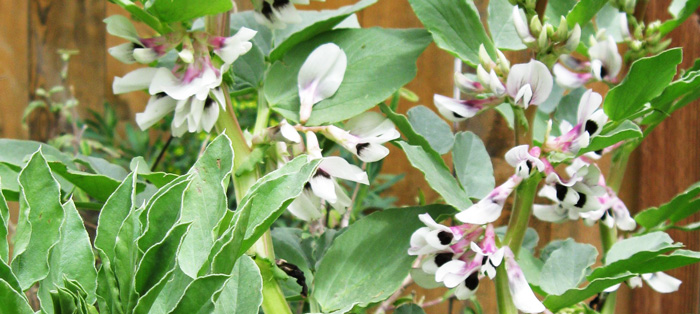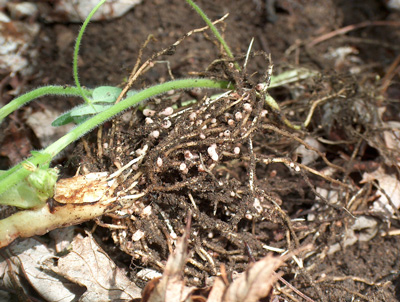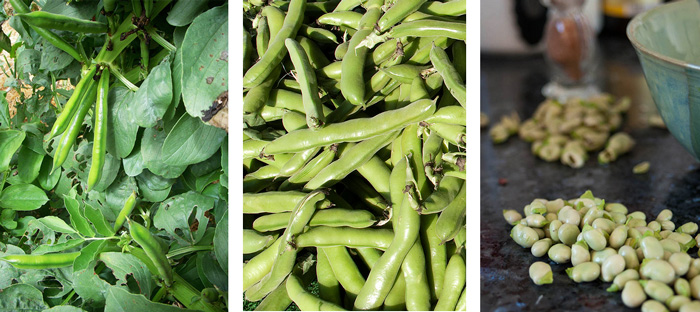Fava beans: Hardworking and Delicious
 Fava beans (Vicia faba)—also known as broad bean, horse beans, pigeon beans, and Windsor beans—are one of the oldest cultivated plants and prized as a springtime delicacy in the Mediterranean. But besides being delicious and easy to grow, fava beans perform a valuable service in the garden.
Fava beans (Vicia faba)—also known as broad bean, horse beans, pigeon beans, and Windsor beans—are one of the oldest cultivated plants and prized as a springtime delicacy in the Mediterranean. But besides being delicious and easy to grow, fava beans perform a valuable service in the garden.
Like their brethren in the legume family, they play a role in capturing nitrogen from the atmosphere and converting it into a solid form in the soil. Centuries before mega corporations began producing synthetic fertilizers, farmers were relying on legumes to keep their fields fertile.
In the Garden
Fava beans work their magic by teaming up with soil bacteria. The roots of the plants emit a substance that attracts Rhizobium leguminosarum. The bacteria then take up residence on the roots, where they form nodules and begin converting atmospheric nitrogen into ammonia. Free fertilizer!
 The trick, though, is to harvest the plants before they produce pods or even much in the way of flowers. Otherwise all the valuable nitrogen will be consumed by the plant itself to put on its lush growth. When flowers start appearing, cut the plants off at ground level and till them under or spread them as mulch. Leave the roots intact. And of course, leave some plants standing, so you can enjoy their bounty in spring.
The trick, though, is to harvest the plants before they produce pods or even much in the way of flowers. Otherwise all the valuable nitrogen will be consumed by the plant itself to put on its lush growth. When flowers start appearing, cut the plants off at ground level and till them under or spread them as mulch. Leave the roots intact. And of course, leave some plants standing, so you can enjoy their bounty in spring.
In severe climates, plant the beans in early spring. Here in northern California, they’re typically planted in fall, when the rainy season gets them off to a good start. They live over during winter and begin producing lightly scented white blossoms in spring, with long green seed pods to follow. Space the seeds about a foot apart and poke them into the soil about an inch deep.
Plants typically reach 4 to 5 feet tall. When growing the plants for food, many gardeners cut the plants back to encourage them to become bushier, which translates to more flowers and more beans, often as many as 20 pods on a single plant. (Try adding the cut leaves to salads or stir-fries.) When the beans swell in the pods, it’s time to harvest them.
On the Table
Fava beans take a bit of work to prepare, but well worth it. First snap one end off the pod, remove the string, and free the plump beans from the pods’ soft, cottony lining. You’re not done yet: To remove the waxy layer that coats each bean, parboil for a few minutes, then chill the beans in cold water. When they’re cool, slip them out of their waxy outer shell.

Their buttery texture and nutty flavor make them a wonderful addition to soups, stews, sauces, and salads. An easy way to enjoy them is to sauté them in olive oil with some garlic and a squeeze of lemon. Pour a glass of wine, and say hello to springtime.
Photo credits: Bonnie Monte (Top); Pat Kight (Middle); Megan Pru (Bottom, left); Robert Couse-Baker (Bottom, centre); Warut Ledge (Bottom, right)

